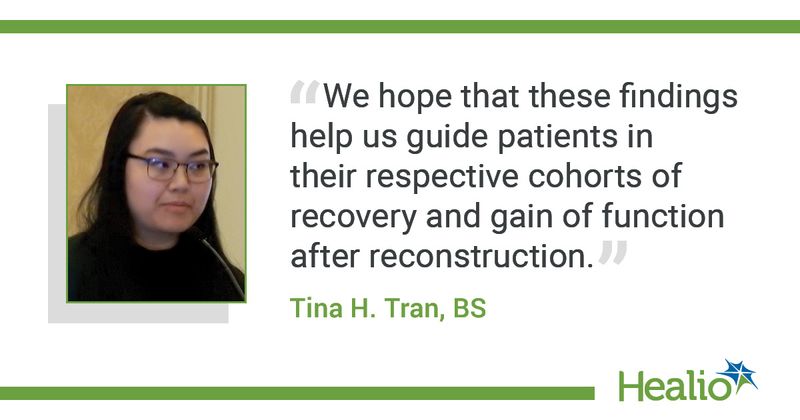Pediatric, adult patients had similar improvement after endoprosthetic reconstruction
Key takeaways:
- Pediatric patients scored statistically better on functional assessments at nearly all time points vs. adult patients.
- Pediatric and adult patients had the same overall improvement from baseline to 1 year.
LAS VEGAS — Although pediatric patients undergoing endoprosthetic reconstruction for primary bone tumors had better functional outcomes than adults throughout treatment, results showed both groups had similar overall improvement at 1 year.
“These findings suggest that pediatric and adult patients improve to a similar degree after endoprosthetic procedures,” Tina H. Tran, BS, said in her presentation at the American Academy of Orthopaedic Surgeons Annual Meeting. “We hope that these findings help us guide patients in their respective cohorts of recovery and gain of function after reconstruction.”

In a secondary analysis of the Prophylactic Antibiotic Regimens in Tumor Surgery trial, Tran and colleagues collected Musculoskeletal Tumor Society-93 (MSTS-93) and Toronto Extremity Salvage Score (TESS) questionnaires preoperatively and at 3, 6 and 12 months postoperatively among pediatric (n=150) and adult (n=447) patients undergoing endoprosthetic reconstruction of lower extremity bone tumors.
Tran noted adult patients had notably diverse tumor burden compared with pediatric patients who mainly presented with primary bone tumor. She added pediatric patients were also more likely to receive preoperative and postoperative chemotherapy and were less likely to receive any radiation vs. adult patients.
“For functional assessment, pediatric patients scored statistically better than adults in nearly all points in the time on both the MSTS and the TESS,” Tran said.
However, the two groups had the same overall improvement from baseline by 1 year and all patients improved by anchor- and distribution-based minimal clinically important difference by 1 year, according to Tran.
“Pediatric patients scored statistically better than adults in nearly all points of follow-up on these instruments,” Tran said. “This table shows that while pediatric patients scored better through interval follow-up, their overall improvement from baseline was the same.”

